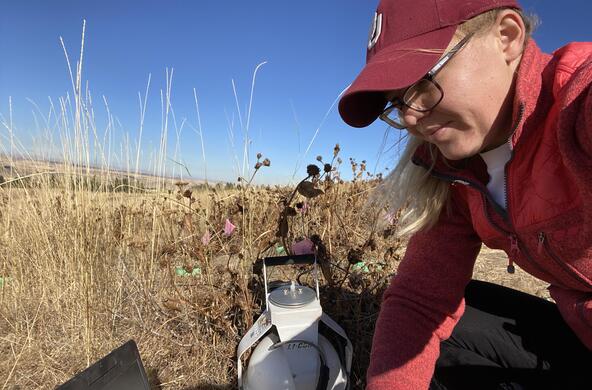Out on runway number nine a big 707’s set to go
-Gordon Lightfoot, Early Morning Rain, 1966
When I use a “carbon tracker” to calculate my CO2 emissions, I usually find that the amount of airplane travel is the largest annual contributor to my impact on the Earth’s climate. And, whereas I installed solar panels to balance my use of electricity for heat, light, and computers, it is nearly impossible to balance the CO2 emissions from air travel.
Globally, air travel consumes around 500,000 metric tons of fuel each day and accounts for 5% of global CO2 emissions. That figure is not likely to decrease anytime soon by the substitution of new technology. Indeed, the percentage may rise as more people travel and as emissions from other activities decrease.
The fuel efficiency of airplanes depends on a variety of factors: the design of the plane, the distance it travels, and the number of passengers it carries. Fuel efficiency has increased about 2-fold during the past few decades. With “long-haul” flights, fuel efficiency can drop due to a greater volume (and thus weight) of fuel that must be carried to complete the trip. That’s why many airlines schedule a refueling stop mid-way to the destination. The longest flight operating today leaves Newark and arrives in Singapore nearly 19 hours later—an exception to the rule.
Flying is energy intensive, but not necessarily the worst way to get from point A to point B. For a full airplane, the fuel used to carry each passenger a certain distance can fall below the fuel consumption for the same passengers going the same distance in a private automobile. New aircraft get about 100 miles to the gallon of fuel per passenger, but if the airplane is not full, this efficiency drops precipitously.
A lot of energy-intensive materials go into building an airplane, especially aluminum. But, the energy used to build an airplane accounts for less than 1% of the energy that is used to fly it over its lifetime. As the airplane ages, the energy it uses increases from degradation of its engines. This can add 3.6 to 6.4% to its carbon dioxide emissions in operation. Airlines that replace their fleet with the latest fuel-efficient models can do a lot to decrease CO2 emissions.
We may focus on our household use of electricity and gasoline, but increasingly we must include air travel in all efforts to reduce carbon dioxide emissions to the atmosphere. As seen in the metabolism of birds, air travel by humans carries a large energetic cost.
References
Grote, M., I. Williams and J. Preston. 2014. Direct carbon dioxide emissions from civil aircraft. Atmospheric Environment 95: 214-224.
Jakovijevic, I., R. Mijailovic, and P. Mirsavljevic. 2018. Carbon dioxide emission during the life cycle of turbofan aircraft. Energy 148: 866-875.






